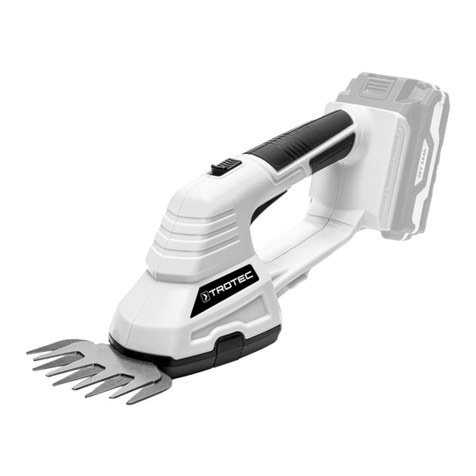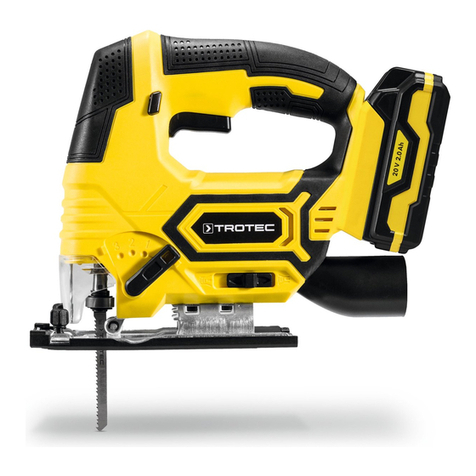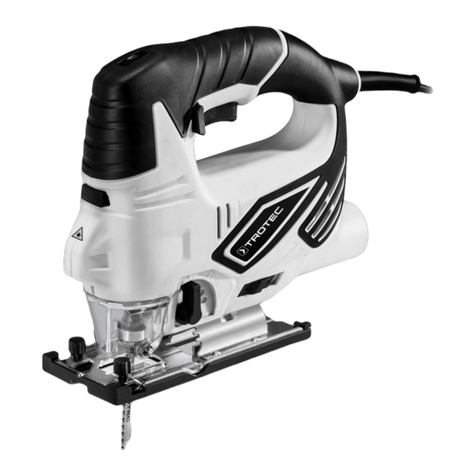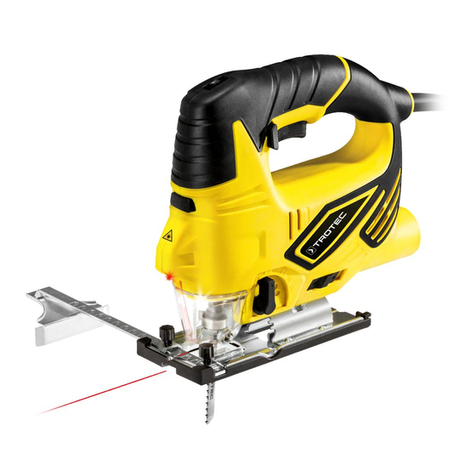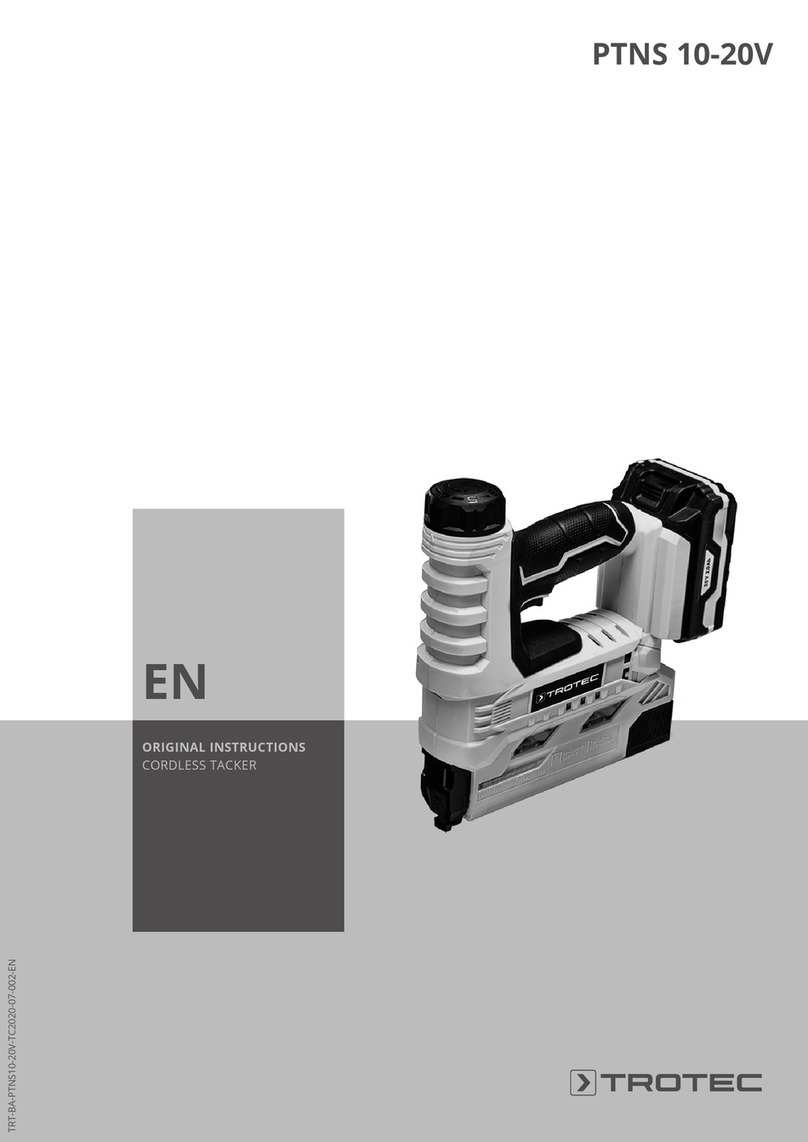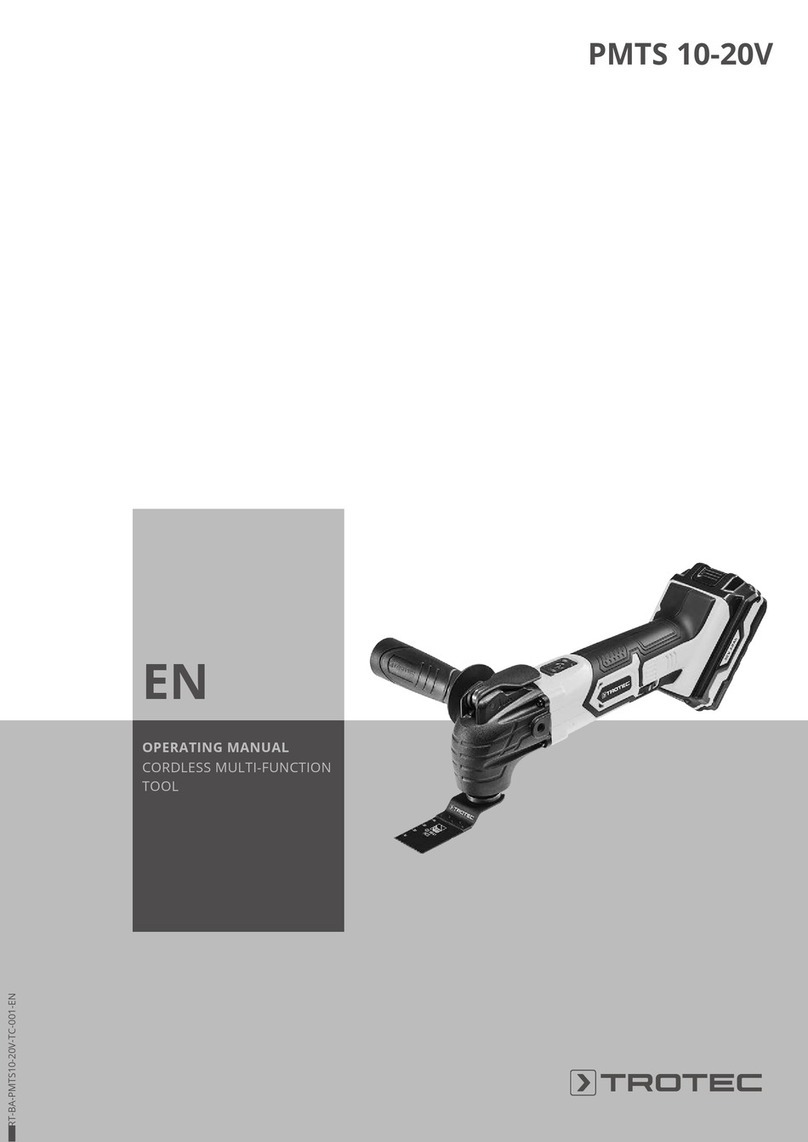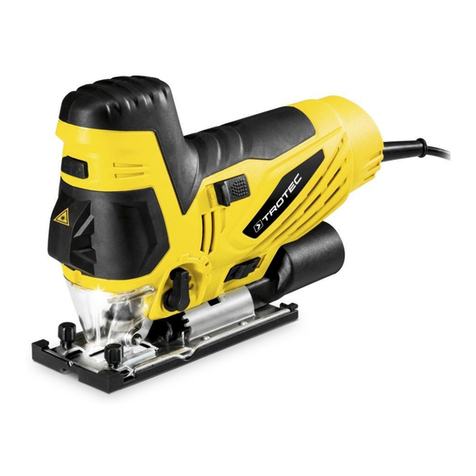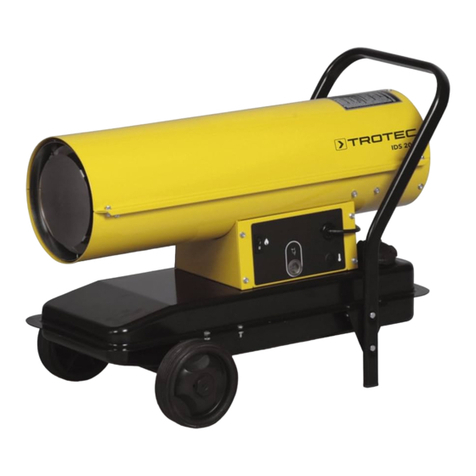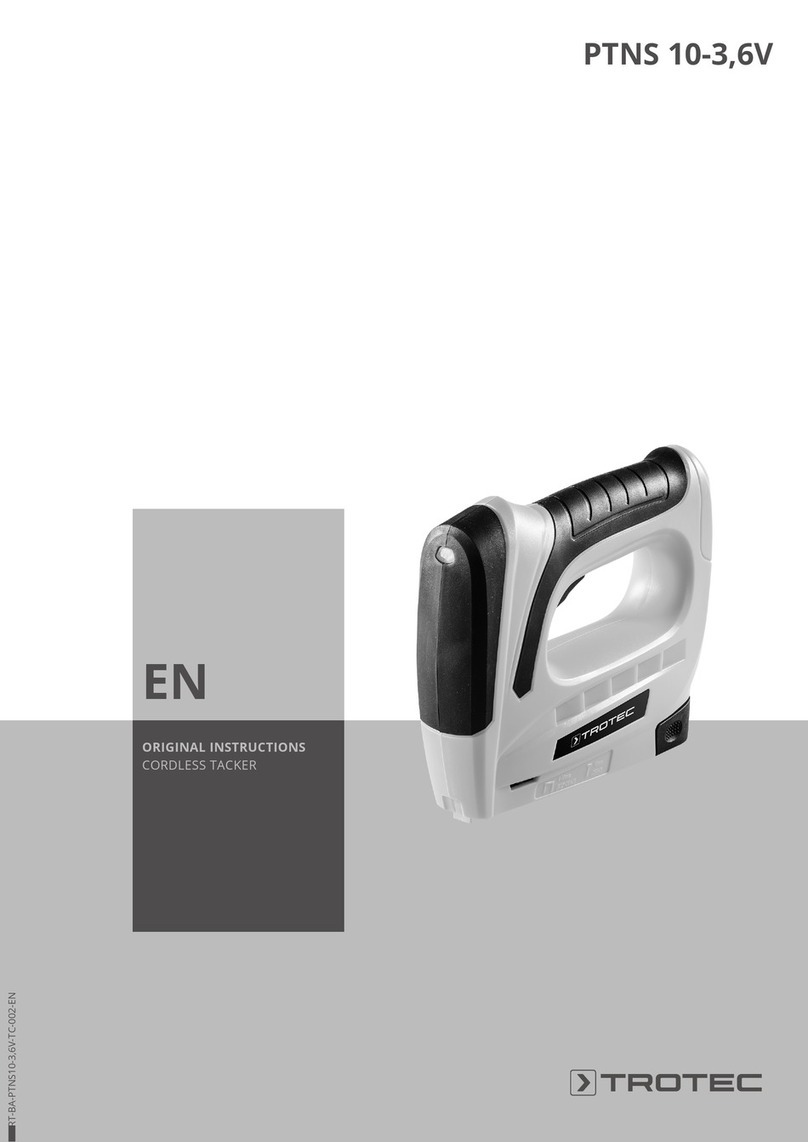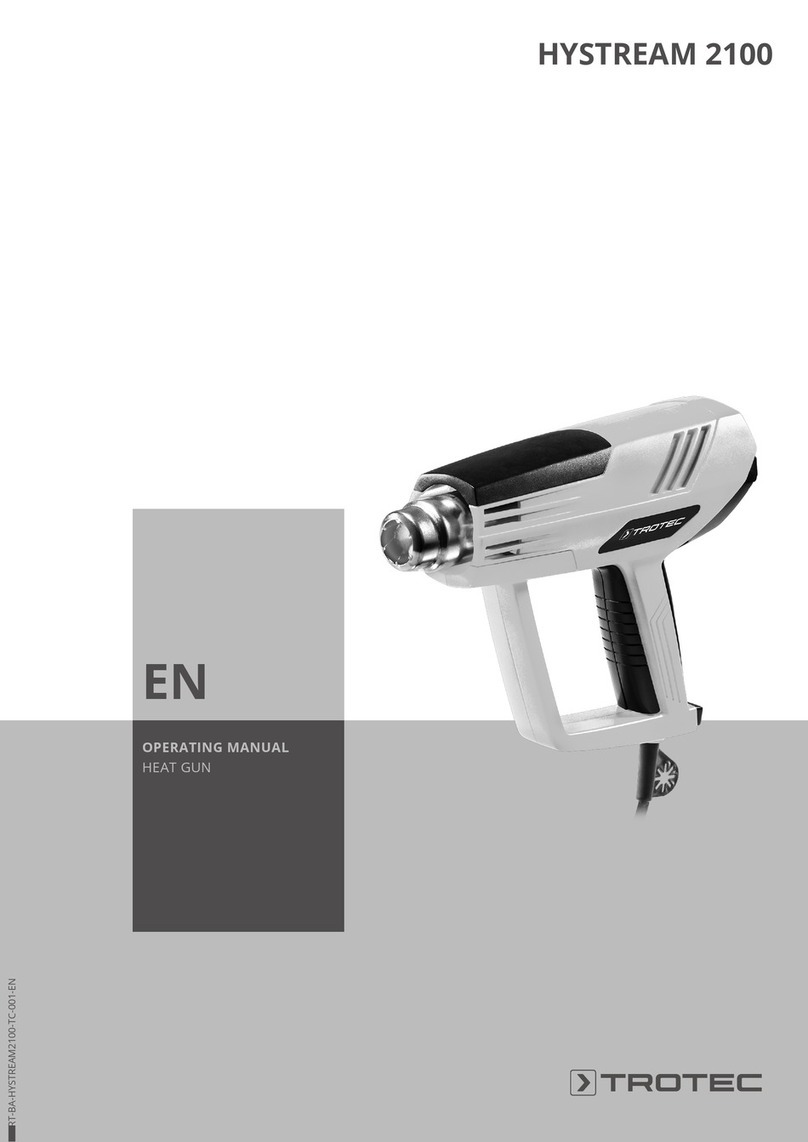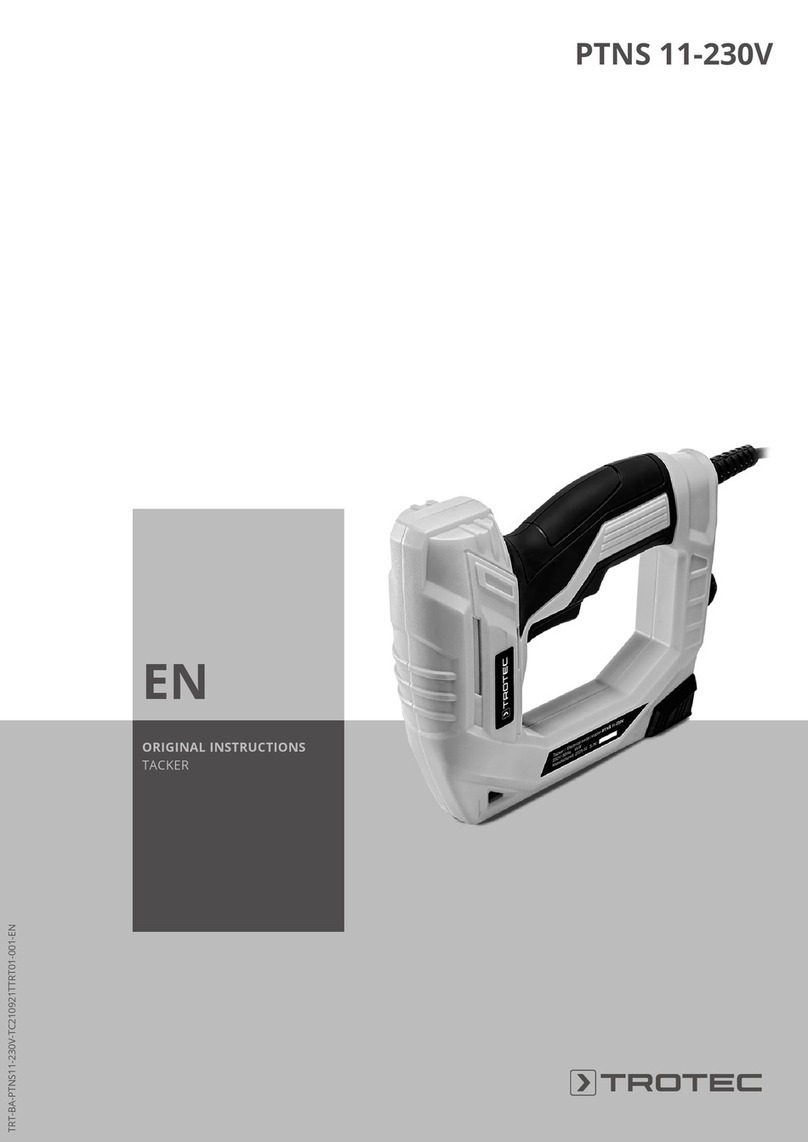
4 EN
300W multi-function tool PMTS 10-230V
General Power Tool Safety Warnings– Power tool
use and care
•Do not force the power tool. Use the correct power tool
for your application. The correct power tool will do the
job better and safer at the rate for which it was designed.
•Do not use the power tool if the switch does not turn it
on and off. Any power tool that cannot be controlled with
the switch is dangerous and must be repaired.
•Disconnect the plug from the power source and/or
remove the battery pack, if detachable, from the power
tool before making any adjustments, changing
accessories, or storing power tools. Such preventive
safety measures reduce the risk of starting the power tool
accidentally.
•Store idle power tools out of the reach of children and
do not allow persons unfamiliar with the power tool or
these instructions to operate the power tool. Power
tools are dangerous in the hands of untrained users.
•Maintain power tools and accessories. Check for
misalignment or binding of moving parts, breakage of
parts and any other condition that may affect the
power tool's operation. If damaged, have the power
tool repaired before use. Many accidents are caused by
poorly maintained power tools.
•Keep cutting tools sharp and clean. Properly maintained
cutting tools with sharp cutting edges are less likely to
bind and are easier to control.
•Use the power tool, accessories and tool bits etc. in
accordance with these instructions, taking into
account the working conditions and the work to be
performed. Use of the power tool for operations different
from those intended could result in a hazardous situation.
•Keep handles and grasping surfaces dry, clean and
free from oil and grease. Slippery handles and grasping
surfaces do not allow for safe handling and control of the
tool in unexpected situations.
General Power Tool Safety Warnings– Service
•Have your power tool serviced by a qualified repair
person using only identical replacement parts. This will
ensure that the safety of the power tool is maintained.
Safety warnings for multi-function tools
•Hold the power tool by its insulated gripping surfaces
when performing an operation where the cutting
accessory may contact hidden wiring or its own cord.
Contacting a live wire might energize exposed metal parts
of the device and lead to an electric shock.
•Only use the power tool for dry sanding. Water entering
an electrical appliance increases the risk of electric shock.
Warning
Fire hazard! Avoid overheating of the material to be
sanded and the sander. Before taking work breaks
always empty the dust container.
Unfavourable conditions such as flying sparks when
sanding metal render abrasive dust in the dust bag,
micro filter, paper bag (or in the filter bag or filter of the
vacuum cleaner) prone to self-ignition. The risk is
particularly high when the abrasive dust is mixed with
residues of paint, polyurethane or other chemical
substances and the sanding material is hot after a
longer period of work.
•Keep your hands out of the sawing area. Do not reach
underneath the workpiece. Risk of injury upon contact
with the saw blade.
•Use appropriate detection equipment to track down
concealed supply lines or consult the local utility
companies. Contact with electrical lines may result in fire
and electric shock. Damaging a gas line may lead to an
explosion. Penetrating a water line causes property
damage and may cause an electric shock.
•During operation hold onto the power tool with both
hands and make sure you stand firmly on the ground.
It is safer to handle the power tool with two hands.
•Use the anti-vibration handle supplied with the device.
Losing control of the power tool may result in personal
injury.
•Secure the workpiece. The grip of tensioning devices or a
vice is more secure than holding the workpiece only by
hand.
Wear protective gloves when changing the insertion
tools. The applied tools heat up during longer
operation.
•Do not scrape moistened material (e.g. wallpaper) and
not on moist subsurfaces either. Water entering a power
tool will increase the risk of electric shock.
•Do not treat the surface to be processed with liquids
containing solvents. Toxic fumes may be produced
during scraping owing to the heat-up of the materials.
•Exercise particular caution when using scraper and
cutter. These tools are especially sharp involving a risk of
injury.
•Ensure sufficient ventilation when processing plastics,
paints, varnishes etc.
•Wait until the device has come to a standstill, before
putting it down.
